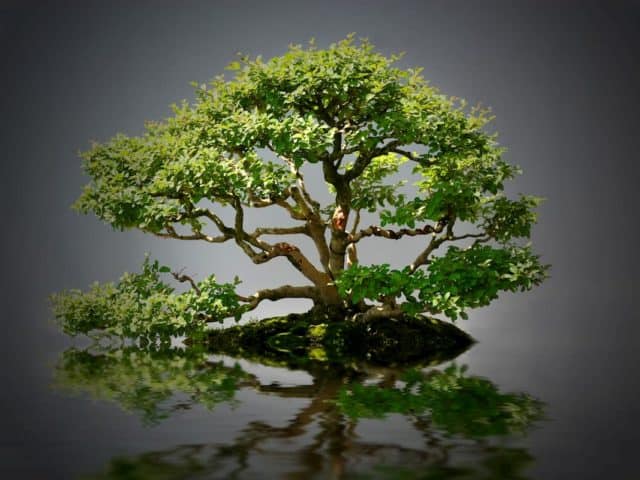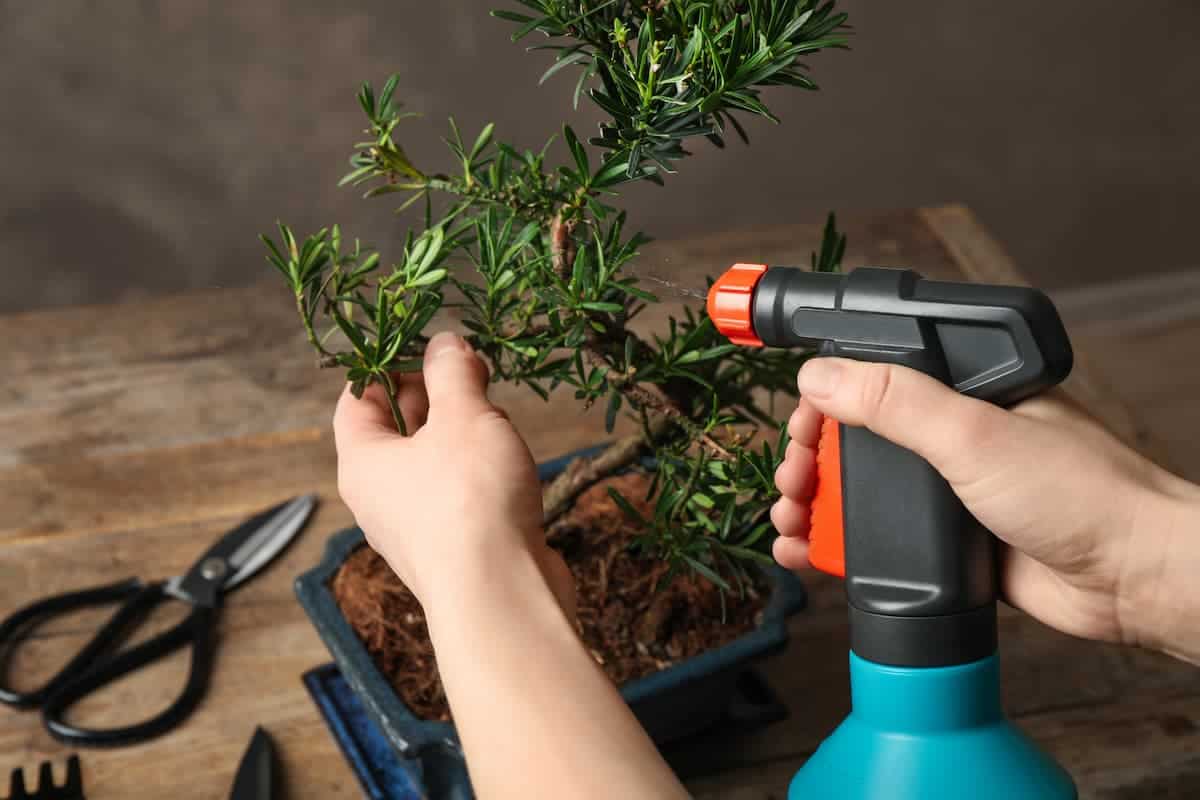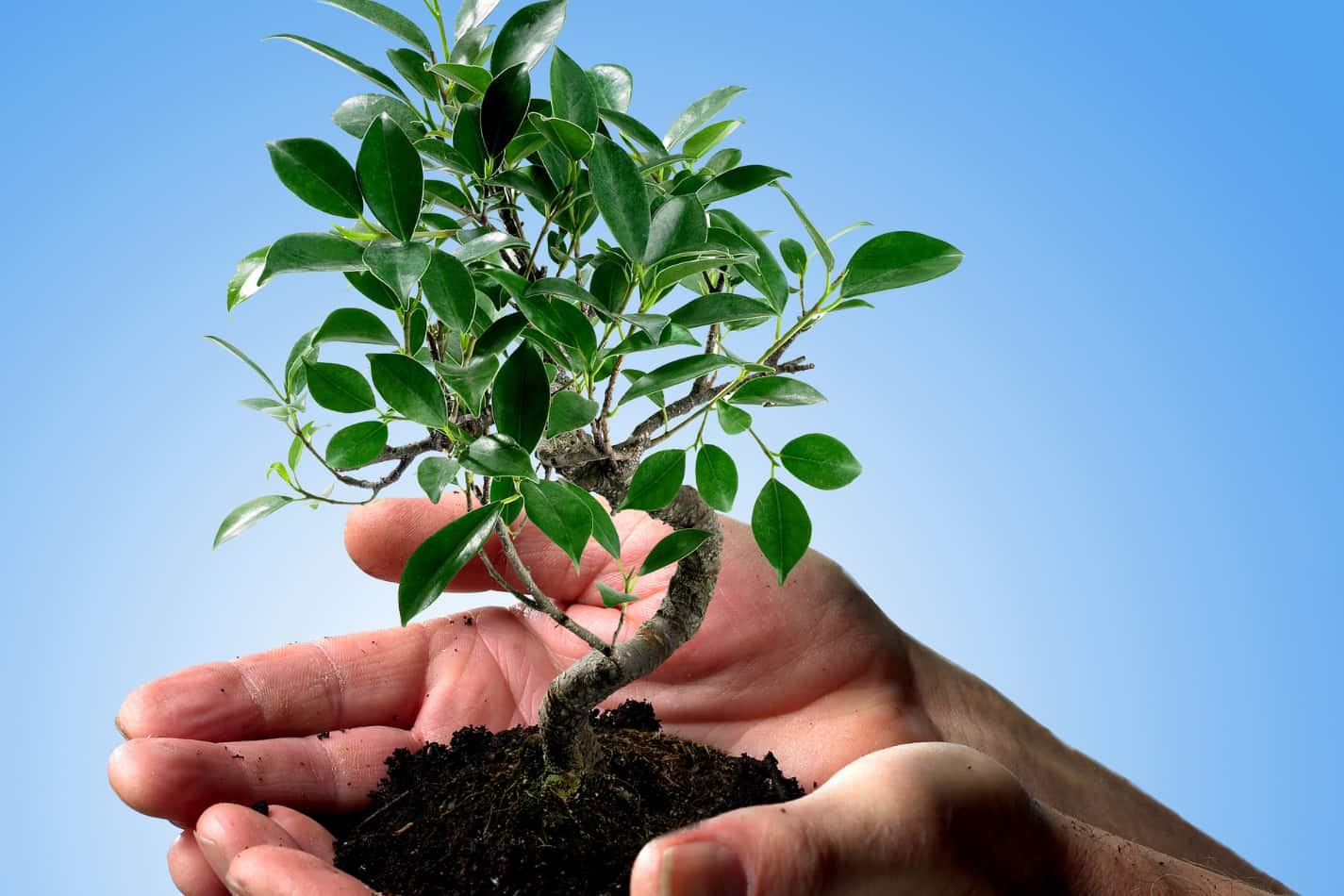As a gardener weaves their dreams into the soil, so too does bonsai raffia become intertwined with the art of bonsai shaping.
You’ve likely seen its work, albeit subtly, in the elegant curves of bonsai trees, standing as silent protectors against the harsh embrace of wiring. This material, derived from the raffia palm, serves a pivotal role in the delicate dance of training these miniature trees, cushioning and guiding their growth without leaving a trace.
But why is it so revered among enthusiasts, and how can you incorporate it into your own bonsai journey? Let’s peel back the layers of this organic ally, uncovering its secrets and exploring how it can elevate your bonsai practice to an art form.

Key Takeaways
- Bonsai raffia, made from the raffia palm, protects branches during shaping.
- It becomes pliable when soaked, preventing damage from wires or benders.
- Quality raffia spreads the force exerted by wires, keeping the tree healthy.
- Soaking raffia in water before use ensures flexibility and branch hydration.
Understanding Bonsai Raffia
Exploring bonsai raffia, you’ll find it’s crafted from the fibrous strips of the raffia palm tree, meticulously soaked to enhance its flexibility for use in bonsai training.
This material is indispensable for protecting bonsai branches when you’re employing branch benders. The soaked raffia, when wrapped around the branches, acts as a protective layer, preventing the wire from cutting into the bark. It evenly distributes the tension applied by branch benders, ensuring that you can shape your bonsai without fear of causing irreversible damage.
Raffia’s ability to retain moisture further shields the wood from cracking, maintaining branch hydration throughout the training process. This technical approach allows for a harmonious blend of tradition and efficiency, ensuring your bonsai’s health and aesthetics without compromising its natural growth freedom.
The Role in Bonsai Shaping
When shaping your bonsai, utilizing raffia is crucial for safeguarding branches under the strain of benders or wire. This natural fiber, when soaked for 20-30 minutes, becomes pliable, making it perfect for wrapping around branches.
It’s used to protect the delicate bark from the harsh indentations and potential damage caused by wiring techniques. Wrapping branches with raffia before applying wire or benders not only reduces the risk of scars but also maintains the tree’s overall health.
Moreover, tethering branches with raffia encourages them to adopt a more natural downward position, essential for the aesthetic you’re aiming for. Applying multiple layers ensures effective protection and support, making raffia an indispensable tool in bonsai shaping.
Selection and Preparation
When selecting bonsai raffia, you must look for high-quality, durable strips from the raffia palm tree, as these will best withstand the rigors of bonsai training.
Preparing the raffia involves soaking it in water for 30 minutes to ensure it’s pliable enough to wrap around branches without breaking. This step is crucial to prevent wire damage to the bark and to evenly distribute the forces applied during the shaping process.
Choosing Quality Raffia
Selecting quality raffia, made from dried strips of the raffia palm tree, is crucial for ensuring its pliability and effectiveness during bonsai training.
Unlike electrical tape, which can suffocate or scar the delicate bark, high-quality raffia gently spreads out forces exerted by wires, protecting your bonsai’s branches effectively.
It’s vital to choose raffia that, once soaked, becomes flexible enough to wrap tightly without breaking. This flexibility helps prevent wire cutting into the bark, ensuring your tree remains healthy and hydrated.
Additionally, quality raffia should be easy to unwrap after the training period, leaving the branch unharmed.
Prioritizing the selection of superior raffia is essential for the well-being of your bonsai, enabling freedom in shaping without compromising the tree’s vitality.
Preparing Raffia Strips
To prepare your bonsai for training, you’ll first need to soak the selected high-quality raffia strips in water for approximately 20-30 minutes to ensure they’re sufficiently pliable. This crucial step transforms the raffia, made from the dried strips of the raffia palm tree, into a flexible tool indispensable for bonsai artistry.
By soaking, you’re not just making the raffia easier to wrap around the branches and bark, but you’re also preparing it to serve a protective role. The moistened raffia helps prevent the wire from cutting into the delicate bark and evenly spreads out the forces exerted during the shaping process.
This preparation ensures that your bonsai’s branches are safeguarded and supported, ready for the meticulous and transformative art of bonsai shaping.
Application Techniques
Before applying raffia to bonsai branches, it’s crucial to soak it in water, ensuring it’s pliable and ready for efficient wrapping. This preparation step is vital to prevent wire scarring and to maintain the branch’s hydration, reducing the risk of cracking.
The traditional application technique involves wrapping three to four layers of this soaked raffia around the branches, a method that provides a tape-like protection and support.
This non-elastic material offers essential compression, aiding in the stable shaping of the branch. Moreover, raffia’s easy unwrapping post-training ensures the branch remains unharmed.
It’s this detailed, technical approach that allows you the freedom to shape your bonsai with precision, limiting any potential damage during the training process.
Maintenance and Care
After mastering the application techniques of bonsai raffia, it’s essential you focus on its maintenance and care to ensure your bonsai’s optimal growth and health.
Regular monitoring is crucial; you must check the raffia for signs of wear or damage, ensuring it still provides the necessary support without restricting the branch’s natural growth.
It helps keep the bonsai structure intact while promoting healthy development.
Creative Uses and Inspiration
Bonsai raffia’s versatility extends beyond mere protection, offering creative avenues for artists to shape and stabilize branches with precision and care. Use raffia to protect branches during significant bends in bonsai training, ensuring the artistry of your miniature trees isn’t compromised.
It provides essential compression and stability, especially for larger diameter branches where maintaining shape and integrity is critical. The non-elastic nature of raffia is preferred for stable bends and shaping, as it tightens as it dries, enhancing branch support and preventing breakage.
This method prevents wire scarring, preserving the aesthetic beauty of the bonsai. Embrace the technical, detailed application of raffia, allowing you the freedom to explore the vast possibilities in bonsai artistry.
Conclusion
In conclusion, bonsai raffia is essential for the careful shaping and training of your bonsai trees. By selecting quality raffia, preparing it through soaking for flexibility, and applying it with precise techniques, you’ll protect your tree’s branches from damage while guiding their growth.
Regular maintenance ensures the raffia serves its purpose without harming the plant. Embrace the creative potential of raffia to enhance the aesthetics and health of your bonsai, making each tree a unique masterpiece.






